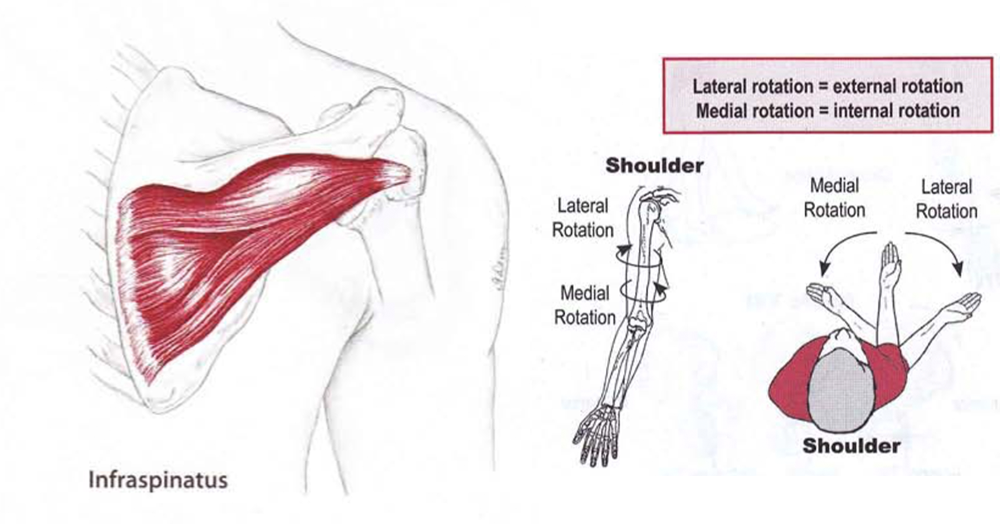Rotator Cuff Rehabilitation Exercises
Rotator cuff injuries can be painful and if not treated correctly, could result in a lack of motion in the shoulder, or even frozen shoulder. So how do you properly heal from a rotator cuff injury and prevent long-term problems? The first step is to understand how the rotator cuff works. Below is an explanation of the rotator cuff complex, the muscles involved, their motions, and exercises you can do to increase your range of motion and stability of your shoulder.
Understanding the rotator cuff
The rotator cuff complex comprises of 4 muscles; the supraspinatus, infraspinatus, teres minor and subscapularis. This is referred to as the SITS muscles. These muscles work together to support the head of the humerus in the glenoid cavity “ball-and-socket” joint of the shoulder as well as provide stability in upper limb motions.
The supraspinatus assists in abduction of the shoulder. You can see this motion in the diagram to the left.
The infraspinatus externally rotates the arm, abducts the arm (motion shown in the diagram above), and extends the arm behind the body.
The teres minor assists in rotation in both directions (motion shown in the diagram above), abduction, adduction (as shown in the diagram to the left) and active extension of the arm behind the body.
The subscapularis rotates the arm inward.
What to do after a shoulder injury
Use the “RICE” method (rest, ice, compression, and elevation) as soon as possible after the shoulder injury occurs. These work together to reduce pain and swelling. Once swelling and pain has subsided, follow these exercises to help prevent issues such as frozen shoulder or a loss of range of motion. Repeat motions 15 times per set, 2 sets per session, 1 session per day.
If you experience pain or instability in these motions avoid that particular exercise.
Find out if massage therapy is right for your shoulder injury. Book today. Should you have any questions, feel free to contact Alanna using our contact form or by calling 902-406-7200.





